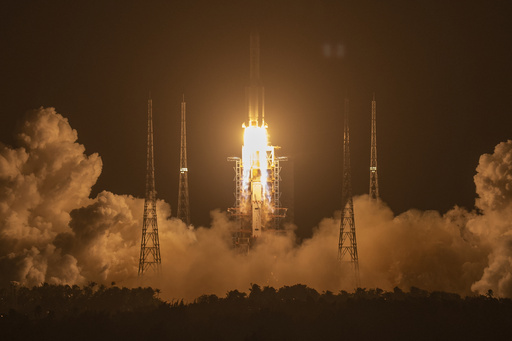New research suggests that volcanoes were erupting on the moon as recently as 120 million years ago when dinosaurs roamed Earth. This conclusion is based on the analysis of three tiny glass beads collected from the moon’s surface by a Chinese spacecraft in 2020, contradicting previous beliefs that lunar volcanoes ceased activity 2 billion years ago. The findings were published in the journal Science on Thursday.
Julie Stopar, a senior staff scientist at the Lunar and Planetary Institute who was not involved in the research, expressed surprise at the unexpected discovery. While images from NASA’s Lunar Reconnaissance Orbiter in 2014 hinted at recent volcanic activity, the glass beads are the first physical evidence supporting this claim. However, further studies are needed to confirm their origin.
The Chang’e 5 mission marks the first time moon rocks have been brought to Earth since the 1970s, when NASA’s Apollo astronauts and Soviet Union spacecraft collected samples. The recent research could provide insights into the volcanic activity duration of small planets and moons, including Earth, according to study co-author He Yuyang from the Chinese Academy of Sciences.
By studying around 3,000 lunar glass beads, researchers identified three that showed signs of originating from a volcano, suggesting that these beads form during volcanic eruptions or meteorite impacts on the moon. Existing timelines indicate that the moon had supposedly cooled off beyond volcanic activity by the time frame indicated by the new study, prompting further investigations to understand this phenomenon.


